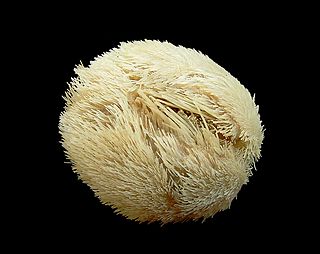
Echinus tylodes is a species of sea urchin in the Echinidae family. It is white with rather sparse pink spines, and is endemic to the eastern coast of North America including the Gulf of Mexico.

The Echinothurioida are an order of sea urchins in the class Echinoidea. Echinothurioids are distinguished from other sea urchins by the combination of a flexible test and hollow spines. The membrane around the mouth contains only simple plates, in contrast to the more complex mouth parts of their close relatives, the Diadematoida. They are nearly all deepsea dwellers.

Clypeaster, common name "cake urchins" or "sea biscuits", is a genus of echinoderms belonging to the family Clypeasteridae.

Araeolampas atlantica is a species of sea urchin of the family Loveniidae. Their armour is covered with spines. It is placed in the genus Arachnoides and lives in the sea. Araeolampas atlantica was first scientifically described in 1974 by K. Serafy.
Cionobrissus revinctus is a species of sea urchins of the Family Brissidae. Their armour is covered with spines. Cionobrissus revinctus was first scientifically described in 1879 by Alexander Emanuel Agassiz.
Clypeaster aloysioi is a species of sea urchins of the family Clypeasteridae. Their armour is covered with spines. C. aloysioi was first scientifically described in 1959 by Brito.
Clypeaster amplificatus is a species of sea urchins of the family Clypeasteridae. Their armour is covered with spines. Clypeaster amplificatus was first scientifically described in 1922 by Koehler.
Clypeaster annandalei is a species of sea urchins of the family Clypeasteridae. Their armour is covered with spines. Clypeaster annandalei was first scientifically described in 1922 by Koehler.

Clypeaster australasiae, the Australasian sand dollar, is a species of sea urchins of the family Clypeasteridae. Their armour is covered with spines. Clypeaster australasiae was first scientifically described in 1851 by Gray.

Clypeaster cyclopilus is a species of sea urchins of the family Clypeasteridae. Their armour is covered with spines. Clypeaster cyclopilus was first scientifically described in 1941 by Hubert Lyman Clark.
Clypeaster durandi is a species of sea urchins of the Family Clypeasteridae. Their armour is covered with spines. Clypeaster durandi was first scientifically described in 1959 by Cherbonnier.
Clypeaster elongatus is a species of sea urchins of the family Clypeasteridae. Their armour is covered with spines. Clypeaster elongatus was first scientifically described in 1948 by Hubert Lyman Clark.

Clypeaster euclastus is a species of sea urchins of the family Clypeasteridae. Their armour is covered with spines. Clypeaster euclastus was first scientifically described in 1941 by Hubert Lyman Clark.

Irregularia is an extant infraclass of sea urchins that first appeared in the Lower Jurassic.

Clypeaster reticulatus, the reticulated sea biscuit, is a species of sea urchin in the family Clypeasteridae. This species was first scientifically described in 1758 by Carl Linnaeus. It lives on the sandy seabed of shallow seas, semi-immersed in the sediment.

Clypeasteridae is a family of sea urchins in the order Clypeasteroida. This family was first scientifically described in 1835 by the Swiss-American biologist Louis Agassiz.

Clypeaster rosaceus, the fat sea biscuit, is a species of sea urchin in the family Clypeasteridae. It occurs in shallow water in the western Atlantic Ocean and was first scientifically described in 1758 by Carl Linnaeus.

Clypeaster humilis is a species of sea urchin in the family Clypeasteridae. This species was first scientifically described in 1778 by the German biologist Nathanael Gottfried Leske. It occurs in the tropical Indo-Pacific region.

Clypeaster japonicus, the Japanese sea biscuit, is a species of sea urchin in the family Clypeasteridae. This species was first scientifically described in 1885 by the German zoologist Ludwig Heinrich Philipp Döderlein.

Clypeaster subdepressus is a species of sea urchin in the family Clypeasteridae. This species was first scientifically described in 1825 by the British zoologist John Edward Gray. It is a very large and flattened sea biscuit, native to the east coasts of North, Central and South America.













